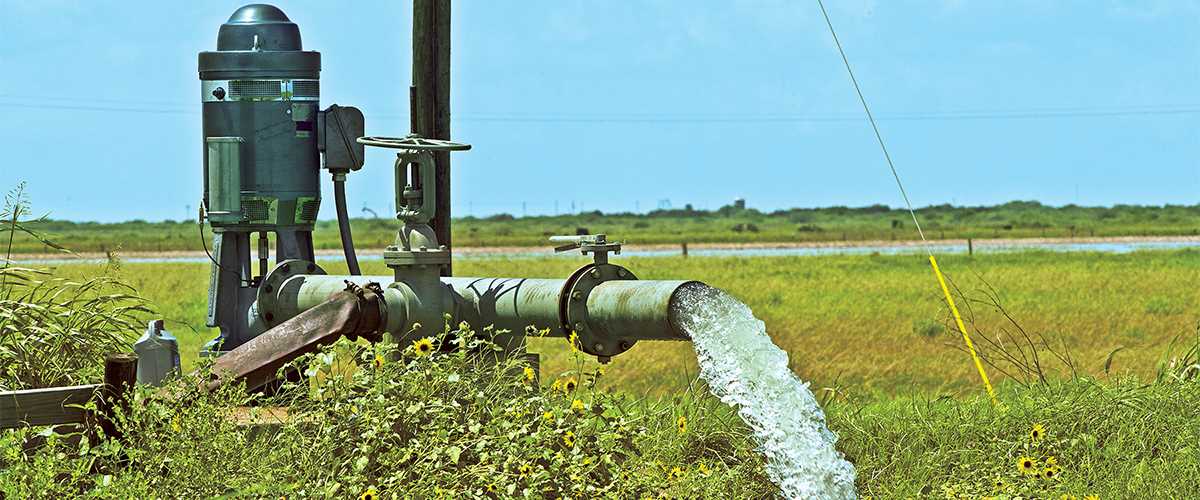DU biologists and engineers work together to deliver conservation projects on diverse landscapes

DU staff often supervise all phases of conservation project delivery, including the installation of water-control structures and pumps.
By Nick Biasini and Matt Willoughby
Ducks Unlimited's mission is to conserve, restore, and manage wetlands and associated habitats for North America's waterfowl. To accomplish this mission, teams of DU biologists and engineers work together with our many partners to deliver projects that put crucial habitat on the ground in high-priority areas across this continent. In doing so, DU and its partners provide a host of benefits for not only waterfowl but also other wildlife and people.
DU's engineering teams typically consist of civil engineers, surveyors, and technicians. These teams work as a unit to deliver conservation projects from the earliest planning stages to completion. DU biologists provide a variety of services that complement those of the engineering teams. They work with landowners to plan projects, make recommendations about restoration and enhancement work, help secure funding required to implement projects, and develop long-term habitat management plans for completed projects. Together, DU engineers and biologists bring an impressive breadth of knowledge to the table when working with our partners.
The delivery of a DU project is a multistep process from start to finish, and those steps vary from project to project depending on the level of DU's involvement. Project objectives range from simple maintenance of existing wetlands and infrastructure to more complex restorations of degraded or destroyed wetlands. On "turnkey" projects, DU is responsible for the entire job from conception to completion. In other instances, DU carries out only a portion of the project, such as design, funding, or construction management.
The first step in planning a DU project is to identify an area suitable for enhancement or restoration. DU engineers and biologists meet with landowners, government partners, corporations, and other groups to identify impacted areas where DU can make a difference for waterfowl and other wildlife. The stakeholders hold a preliminary meeting to discuss the goals of each group. DU and its partners then begin the planning process to develop a project design and secure the necessary funding to pay for it.
One of the services that DU engineering teams provide on specific projects is to conduct a topographic survey. Before construction work can begin, it is very important to understand the "lay of the land." The topographic survey provides engineers with a detailed understanding of ground and water elevations and other important features on the project site. This information is usually gathered by surveyors and technicians using various types of specialized equipment.
Once the topographic survey has been completed, engineers work in concert with DU biologists and partners to design the project in a manner that will maximize the conservation benefits for waterfowl, other wildlife, and people. After the preliminary design is complete, DU engineers and biologists meet with the landowner to review the plans. When the design is approved, the final plans are completed and the project is ready for construction.
In most cases, DU obtains funding from Major Sponsors, foundations, state and federal grants, and other sources to pay for its conservation work. DU biologists and engineers work together to create a budget for project construction and to apply for funding. Once funding has been secured, DU engineers select a local contractor to construct the project. DU engineers and biologists often manage the construction work themselves to ensure that the project is completed in accordance with the plans.
When construction is complete, DU engineers and biologists meet with the landowner to discuss the future management of the habitat. A successful project requires all the components mentioned above to be completed from concept to delivery. DU's dedicated teams of biologists, engineers, surveyors, and technicians work to accomplish all these things and more. As conservation professionals, we have a responsibility to use our knowledge and abilities for the benefit of waterfowl, other wildlife, and people. And DU's biologists and engineers strive to do this every day with all the resources we have at our disposal. The world can be as good as we make it, and we must make it the best we can for this generation and for generations to come.
Nick Biasini is a regional biologist and Matt Willoughby is a regional engineer in DU's Southern Region.
Ducks Unlimited uses cookies to enhance your browsing experience, optimize site functionality, analyze traffic, and deliver personalized advertising through third parties. By continuing to use this site, you agree to our use of cookies. View Privacy Policy